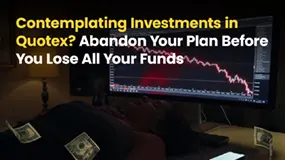简体中文
繁體中文
English
Pусский
日本語
ภาษาไทย
Tiếng Việt
Bahasa Indonesia
Español
हिन्दी
Filippiiniläinen
Français
Deutsch
Português
Türkçe
한국어
العربية
When Should You Buy or Sell In The Forex Market?
Abstract:If you want to be a successful forex trader, you must first learn how to purchase and sell currency pairs. If you've ever worked in the financial market, you know that time is crucial. To keep making money in forex trading, you have to buy, sell, and trade currency pairs at the right time.

In this post, we will explain how to determine when to buy and sell in forex, as well as how to identify the direction of the trend and discover a solid entry. The chances of profit will be substantially boosted using technical and fundamental analysis.
What currencies may investors purchase and sell?
Almost all currencies are available for trading. Currency pairings are classified into three types: major, minor, and exotic.
Currency Pairs of Major Importance
The most commonly traded currencies in the world are represented by major currency pairings. You can trade them almost constantly because of their high liquidity. Furthermore, while trading these pairs, you will get the lowest spreads or brokerage charges.
EUR/USD, USD/JPY, GBP/USD, USD/CHF, USD/CAD, AUD/USD, and NZD/USD are among the major currency pairings.
Currency Pairs of Minor Importance
A minor currency pair or a cross-currency pair is one that does not contain the US dollar, such as EUR/GBP, EUR/AUD, GBP/JPY, CHF/JPY, NZD/JPY, GBP/CAD, and so on.
Currency Pairs from Other Countries
A pair of exotic currencies is made up of the currency of a major country and the currency of a country that is still growing. Exotic pairings are less common among investors than major or minor pairs, hence spreads might be greater when trading them.
EUR/TRY, USD/HKD, GBP/JPY, CHF/JPY, NZD/JPY, and GBP/CAD are examples of exotic currency pairings.
When Should You Buy and Sell Forex?
Choosing when to buy and sell currency pairs is a hard decision that will depend on how you trade. Nonetheless, there are some tried-and-true methods for correctly timing the market.
Trend
A trend is a propensity for prices to move in one way over time. Long-term, short-term, upward, downward, and even sideways trends are all possible.
When exchange rates move in a certain direction, trend traders buy and sell currency pairs. Traders use technical tools like Fibonacci retracements, moving averages, and momentum oscillators to figure out when to join a trend. If the signs are correct, the trader will buy to start a bullish trend and sell to start a bearish trend.
Reversal
A reversal is a shift in an asset's price direction. A reversal might occur either to the upside or to the downside. Technical indicators are often used to buy, sell, and trade reversals in order to find a possible entry point into a market. A reverse trade is done when a currency pair becomes “overbought” or “oversold.”
Range
A range-bound market is one in which prices fluctuate between a specified high and a low. Because of the absence of a dominant trend, these marketplaces are sometimes seen as uninteresting.
Many traders, however, make money by concentrating on range-bound markets. One typical method is to use reversion-to-the-mean methods.
When using a reversion-to-the-mean approach, buying and selling currency pairs is done against an established top or bottom. If the price goes back to a more normal level, selling at the top of the market or buying near the bottom could be a good idea.
What is the volume of buying and selling in the Forex market?
The currency market is the world's biggest market. According to the Bank for International Settlements' most recent Triennial Central Bank Survey, the average daily trade volume was more than $6.5 trillion.
The massive trading volume gives tremendous liquidity to the currency market. This liquidity is advantageous to regular traders since it lowers transaction costs. All trading is done over the counter, which enables deals to be performed 24 hours a day, seven days a week.
Conclusion
There is no ideal timing to purchase or sell any asset, nor is there a perfect plan for profiting quickly. Traders might attempt to discover the hidden pattern or profit from market inefficiencies. According to scientific studies, combining fundamental and technical analysis yields the best long-term return.
You can use the WikiFX App to figure out how much the financial market is worth each week and to figure out the risk, return, and profit of your daily trade.
Official website: www.wikifx.com
WikiFX tools: https://www.wikifx.com/en/forex-tools.html
Stay tuned for more Forex educational articles
Download the WikiFX App from the App Store or Google Play Store to stay updated on the latest news.

Disclaimer:
The views in this article only represent the author's personal views, and do not constitute investment advice on this platform. This platform does not guarantee the accuracy, completeness and timeliness of the information in the article, and will not be liable for any loss caused by the use of or reliance on the information in the article.
Read more

Dark Side of AETOS: They Don’t Want You to Know
AETOS is an Australia-based broker. All over the internet, you will find positive reviews about this broker, but no one is talking about the risks involved with AETOS. However, we have exposed the hidden risks associated with AETOS

Contemplating Investments in Quotex? Abandon Your Plan Before You Lose All Your Funds
Have you received calls from Quotex executives claiming to offer you returns of over 50% per month? Do you face both deposit and withdrawal issues at this company? Or have you faced a complete scam trading with this forex broker? You're not alone. Here is the exposure story.

15 Brokers FCA Says "Are Operating Illegally" Beware!
If a reputable regulator issues a warning about unlicensed brokers, it's important to take it seriously — whether you're a trader or an investor. Here is a list you can check out- be cautious and avoid getting involved with these scam brokers.

Scam Alert: Revealing Top Four Forex Scam Tactics Employed to Dupe Investors
Gaining and losing on forex trades is normal, but not scams that siphon out millions in no time! In this article, we will reveal forex scam tactics. Read on!
WikiFX Broker
Latest News
PrimeXBT Launches MT5 PRO Account for Active Traders
eToro Expands into Singapore with MAS CMS Licence
Renault shares plunge 16% after French carmaker lowers guidance, appoints new interim CEO
Darwinex Launches INDX: A Revolutionary Investment Strategy for Traders
Top Forex Trading Scams to Watch Out for in 2025
Real Risk Factors with Admiral Markets ! Explained
5 Reasons to Know Why INFINOX Is a Standout Broker?
5 things to know before the stock market opens Wednesday
Trump's big beautiful bill' caps student loans. Here's what it means for borrowers
Weekly mortgage demand plummets 10%, as rates and economic concerns rise
Currency Calculator


